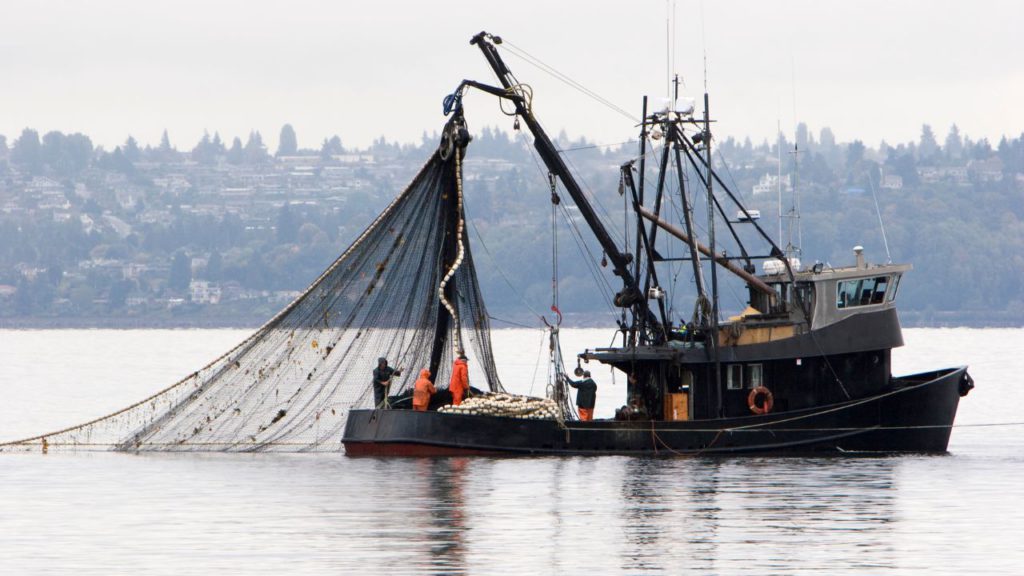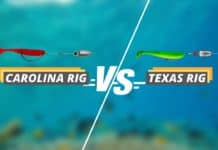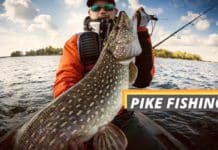Trawling vs. trolling are both fishing methods. However, there are a couple of crucial differences between the two.
Trawling involves dragging a large cone-shaped fishing net in the middle of the water column or at the bottom of the ocean floor. On the other hand, trolling is the trailing of a baited line.
Trawling vs. Trolling: Is There a Difference?
Yes, there are several differences between trolling and trawling.
First is the gear. With trawling, anglers use trawl nets, whereas in trolling, you’ll use lines and hooked lines. Second is the purpose. Trawling is the choice in commercial fishing because it can trap more fish. On the other hand, trolling is more recreational fishing, typically used in sport fishing.
Another difference is the use of power-driven vessels. Both methods require a boat but trolling maximizes speed to be more successful, whereas trawling is more on power because you’ll be dragging a huge net across the water.
Below is a table showing the differences between trolling and trawling. It will help you understand the troll vs. trawl discussion better:
| Trolling | Trawling |
| Uses lines, lures, and bait to catch fish | Uses cone-shaped nets |
| Relies on speed | Relies on net structure and fishing vessel hauling power |
| Used mostly in recreational fishing | Used in commercial and recreational fishing |
| Applicable in rivers, lakes, and oceans | Only applicable in larger water bodies like lakes and oceans |
What Is Trawling?

What does trawling mean?
Trawling is a popular fishing method that involves dragging a cone-shaped net called a trawl to catch fish in the midwater or along the sea bottom. The net’s opening is wide to drive more fish and crustaceans in, whereas the narrow end makes it more difficult for the catch to escape.
Usually, anglers use one boat in single-boat trawling. Still, two or more trawlers can drag the net to cover more distance in the water.
Types of Trawling
When trying to understand the difference between trawling vs. trolling, you’ll discover that there are two types of trawling – bottom trawling and midwater trawling. Both types use a net, trawl doors, and a fishing vessel with high horsepower. The only difference is how deep the fishermen set the net.
Bottom Trawling
Bottom trawling, as its name suggests, involves trawling at the seabed, targeting different marine animals.
So how do bottom trawls work in this trawling vs. trolling discussion?
Trawl gear designs are different depending on the fish species the net catches. However, all bottom trawls have floats attached to the top (headrope). Weights are then attached to the bottom of the net, also known as the footrope.
The headrope and footrope keep the net’s opening from closing up. Therefore, the net moves across the ocean floor, trapping fish in the mesh. The bottom of the trawl also has a sweep designed to collect large fish and other marine animals like dolphins. Even predators like sharks can be caught in the net.
Fact: Bottom trawling destroys habitats. It is also a non-discriminatory fishing method, meaning there is a lot of bycatch.
Midwater Trawling
Unlike bottom trawling, midwater trawling is fishing from the middle portion of the water column.
A single boat drags the cone-shaped net, spreading the trawl doors. It is also possible to have two ships dragging the net, known as pair trawling. Fish get into the net, where trapping occurs in the codend.
The nets used in trawling differ in size. Mostly, you sow four mesh panels together, creating a cone shape. You can modify the size of the net base depending on the fish species you are targeting.
Target fish species in midwater trawling are:
- Shrimp
- Squid
- Halibut
- Sardines
Trolling

If you’re asking, “what does trolling mean?” Here’s a good way to look at it.
Trolling is a different method of fishing where you use bait or a hooked lure and tow it behind a trolling boat. Depending on the fish you are targeting, you can slowly release a trolling line from a static position or have multiple rods with the bait fish already suspended in a specific depth.
Whether you are interested in freshwater trolling or saltwater trolling, you must have the best gear and be alert while fishing if you want to take home a good catch.
Most anglers use trolling to catch:
- Salmon
- Mackerel
- Catfish
- Walleye
- Mahi Mahi
- Marlin
- Trout
- Wahoo
Trolling With Outriggers
You’ve learned what trawling vs. trolling entails. But there’s more to it.
Outriggers are common on large sportfishing boats. They are long poles that you attach to the side of the boat.
By adding outriggers, anglers achieve the following:
- Additional width to the trolling spread eliminates the chances of tangling
- Increased trolling of baits since you have more lines in the water
- Presentation of bait in clear water, away from the bubbling boat engine
When the outrigger gets a hit, a clip releases the fishing line. At this point, the angler should step in to reel in the fish with the rod.
Outriggers are common in the Northeast, where anglers target yellowfin and albacore tuna. Every boat, including small open boats, have the right set of outriggers. In some cases, a reinforcement plate is necessary.
Trolling With Downriggers
Downriggers and outriggers are similar in that they spread out the bait. The difference is that outriggers increase width while downriggers increase the bait’s depth into the water. Anglers connect a weight to the fishing line using a clip.
When the fish bites the bait, the clip releases the line. Once again, you should step in and ensure you catch the fish and get it into the fishing boat.
Downriggers are usable at sea and in freshwater. On the downside, some anglers find downriggers expensive. If you are on a budget, planer boards are cheaper. These boards lower and spread trolling baits into the water. Planer boards are floating devices that allow the fishing line to pass through. They also have a spring, adjustable to match a fish’s pulling power.
The Final Trawl Through
It’s no doubt that many anglers want an answer to this trawling vs. trolling debate. Although the terms sound very similar, the differences are indisputable.
Anglers who practice trawling do so for commercial purposes. Trolling, on the other hand, is recreational.
Table of Contents



